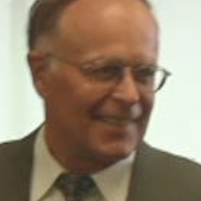New York Town, Unable to Trust Regulators, Tested Air Pollution Itself
Saturday, November 12, 2011
 Mark Kamholz
Mark Kamholz
Until recently, the air above the blue-collar town of Tonawanda, New York, was often a “toxic blue haze” featuring odors like ammonia, sulfur and other fumes. If left up to government regulators, townsfolk might still be wondering what the cause was. Instead, in an attempt to find the source of the air pollution that was making many seriously ill, a determined group of residents spent years collecting their own air samples using household buckets, baggies and tiny vacuums.
The culprit turned out to be a “relic” of a factory—the Tonawanda Coke Corp., which had been producing material for smelting iron since 1917. The evidence collected by locals, along with testimony from former plant supervisor Ron Snyder, eventually convinced state and federal regulators to inspect the plant. What the inspectors found was ghastly: aging equipment and pipes leaking large quantities of benzene (ten times the legal limit) and other dangerous chemicals.
Finally, in July 2010, six years after the initial citizen bucket collections, the U.S. Environmental Protection Agency filed civil and criminal enforcement actions against the plant, accusing operators of “underestimating its toxic emissions, operating illegal equipment that pumped untreated toxic gas into the air and failing to use pollution controls required by its permit that would have prevented releases of hazardous particles,” according to iWatch News. The plant’s environmental control manager, Mark Kamholz, is also facing charges of obstructing justice by instructing an employee to hide from inspectors the fact that coke oven gas was emitted directly into the air during normal operations.
-Noel Brinkerhoff, David Wallechinsky
Where Regulators Failed, Citizens Took Action — Testing Their Own Air (by Elizabeth Shogren, Kristen Lombardi and Sandra Bartlett, iWatch News)
- Top Stories
- Unusual News
- Where is the Money Going?
- Controversies
- U.S. and the World
- Appointments and Resignations
- Latest News
- Trump Goes on Renaming Frenzy
- Trump Deports JD Vance and His Wife
- Trump Offers to Return Alaska to Russia
- Musk and Trump Fire Members of Congress
- Trump Calls for Violent Street Demonstrations Against Himself






Comments